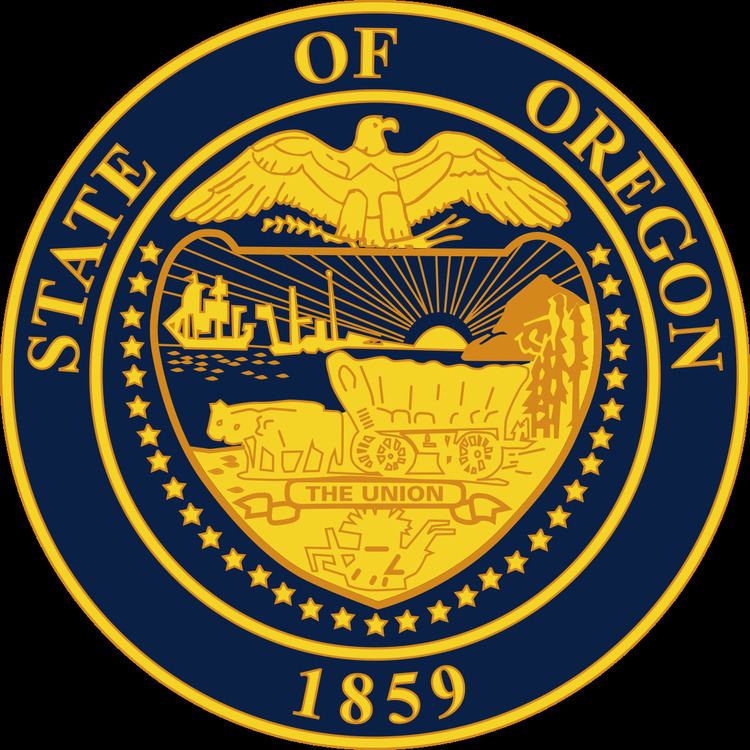 | ||
The list of Oregon ballot measures lists all statewide ballot measures to the present.
Contents
In Oregon, the initiative and referendum process dates back to 1902, when the efforts of the Direct Legislation League prompted amending the Oregon Constitution for the first time since 1859. The process of initiative and referendum became nationally known as the Oregon System.
There are three types of ballot measures: initiatives, referendums, and referrals. Initiatives and referendums may be placed on the ballot if their supporters gather enough signatures from Oregon voters; the number of signatures is a percentage based on the number of voters casting ballots in the most recent election for the Governor of Oregon.
The constitutional foundation for ballot measures (and legislation produced by the Oregon Legislative Assembly) may be found in Article IV of the Oregon Constitution, and Chapter 250 of the Oregon Revised Statutes relates to initiative and referendum as well.
The Oregon Blue Book, produced by the Oregon government, maintains a list similar to this one.
1972
1988
May 17, 1988 primary election
November 8, 1988 general election
1989
May 16 Special Election
June 27 Special Election
November
NOTE: Detailed information about elections from 1995 to the present, including ballot measure text, sponsorship, and arguments for and against, may be found at the Oregon Secretary of State's web site.
November
November 5 General Election
November
General Election: Detailed information on Measures 14-18 and 21-27, and official election results available at the Secretary of State's web site.
November
In the fall election, Measure 36 (outlawing gay marriage) dominated public attention: 81,667 (or 4.7%) more votes were cast on Measure 36 than the average of all other measures on the ballot. Measure 37 (restricting land use regulation) was contentious before the election, and became more controversial after the fact, as state and local governments attempted to implement it.
Two other measures passed in 2004, both referred by the Legislature for the General Election, and neither one drawing any opposition in the Voters' Pamphlet. Measure 31 made it possible to postpone certain elections in the event of a candidate's death, and Measure 32 changed the way revenue from mobile home taxes is handled.
2006
In 2006, voters considered 11 statewide ballot measures. All were placed on the ballot by initiative.
Nearly all the measures were defeated. Measures extending prescription drug pricing benefits (Measure 44) and restricting the government's power of eminent domain (39) were the only ones that passed without qualification; a campaign finance reform system (47) passed as well, but a companion measure (46) that would have provided necessary constitutional support for it failed.
Out-of-state interests spent millions of dollars supporting—and in one significant case, opposing—Oregon ballot measures. None of these big-money measures passed; in fact, Measures 39 and 44 passed without drawing any organized opposition.
Unsuccessful measures
Measures 41 and 48 aimed to restrict the amount of money the State government could raise and spend, respectively. They were both mostly funded by the Taxpayers Association of Oregon, which in turn received nearly all its funding from Illinois-based Americans for Limited Government. Opposition to these two measures was paired as well, spending $1.9 million to defeat the two measures.
Measure 42 was promoted by conservative ballot measure activist Bill Sizemore. Sizemore broke with his custom by promoting a consumer-oriented bill, which would have outlawed the use of credit data in determining insurance premiums. Opponents of the measure spent over $3.7 million (nearly all of which came from out of state), defeating the measure. Their advertising focused heavily on Sizemore's credibility. Sizemore did not run an active campaign promoting the measure. He and his longtime political ally Loren Parks were the only people to submit arguments in favor for the Voters' Guide.
Measure 45, almost entirely financed by $1.2 million from Illinois-based U.S. Term Limits, would have established strict term limits in the Oregon Legislative Assembly. Term limits had previously been in place in the late 1990s, but the prior law was declared unconstitutional by the Oregon Supreme Court. The measure failed.
Measures 46 and 47 were presented as a single package; 46 would have amended the Constitution to allow limitations on campaign financing (heavily favoring popular vote, and requiring a 75% vote for such changes in the Legislature); and 47 detailed specific limitations. Measure 47 passed, but in the absence of the kind of Constitutional support Measure 46 would have provided, it will have no effect. The campaigns both for and against this package were funded almost entirely from Oregon sources.
Measure 40 sought to require that judges of the Oregon Supreme Court be elected by district, rather than statewide.
Measure 43 sought to require parental notification in the event of certain teenage abortions. (Two measures restricting abortion were also rejected in the 1990 general election.)
Successful measures
Measure 39, described by its proponents as a natural extension of 2004's Measure 37, restricted the governments powers of eminent domain. Measure 44 extended a state prescription drug benefit, previously only available to seniors, to cover all uninsured Oregonians.
2007
In 2007, voters considered 2 statewide ballot measures.
May
Three measures (51, 52, and 53), all legislative referrals and all constitutional amendments, were on the May 2008 primary ballot. All three passed; the first two by wide margins, and Measure 53 by a margin so narrow that it triggered an automatic recount.
November
In November 2008, voters considered eight initiatives and four legislative referrals. The four referrals all passed, and the initiatives all failed.
